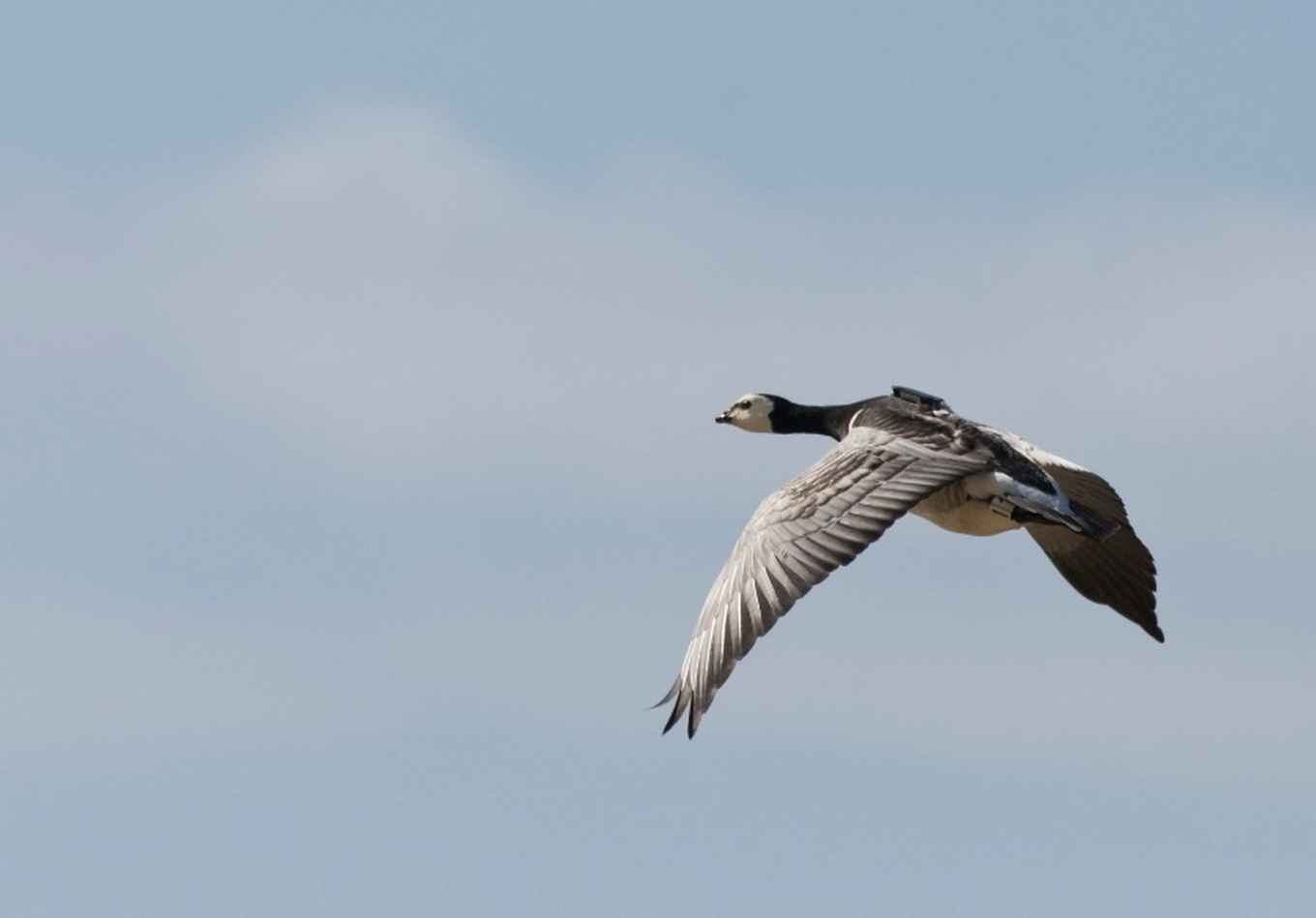Climate warming speeds up migration of barnacle goose
19 July 2018

Barnacle geese are long-distance migrants that travel in spring from their temperate wintering grounds to the breeding grounds in the Russian Arctic. The timing of migration and breeding is extremely important as the birds try to match the moment of their chick’s largest food requirements with the Arctic Tundra’s peak in food availability. The Arctic breeding grounds are currently facing rapid temperature rises as a result of global warming, which causes spring to arrive earlier. An international team of researchers led by Thomas Lameris studied whether barnacle geese are able to adjust the timing of migration and breeding to the early arrival of spring.
Advanced migration
The researchers combined multiple years of bird tracking and field observations along the entire flyway of barnacle geese. In total, 125 female barnacle geese were equipped with tracking devices to determine the timing of migration; 40 of those were UvA-BiTS trackers (www.UvA-BiTS.nl). Senior author Prof. Bart Nolet, Special Chair of Waterfowl Movement Ecology, explains how they used the data: ‘Long-distance, large migratory birds are thought to need stopovers where they both refuel to complete their journey and build up body stores for breeding. They benefit from a prolonged spring by visiting subsequent stopover sites just when spring starts there, to be in breeding condition when they arrive at the breeding grounds. With the data we collected we were able to show that barnacle geese speed up migration in a warm spring by skipping stopovers and flying nearly non-stop instead. Hereby they advance arrival on the Arctic breeding grounds.’
Even though barnacle geese seem to be able to advance their migration in warm springs, this is not solving the problem. Nolet: ‘After such an early arrival the birds cannot lay their eggs immediately, like they still do in late years, but apparently need time to build up body stores on the breeding grounds. As a result, they do not advance their laying date as much as arrival date. Consequently, their chicks hatch late relative to the start of spring.’ This increases the risk for a mismatch between the food requirement of the chicks and the food availability on the tundra, and causes fewer chicks to survive until fledging.
Migration-stop
It is interesting to see that some of the barnacle geese have recently stopped migrating and started breeding in the temperate region. ‘By comparing migratory and non-migratory geese, we can study what the costs and benefits are of migration,’ says Nolet. The non-migratory population also lays their eggs too late, as they cannot benefit from the prolonged spring as the migratory geese do. ‘Comparing the migratory and non-migratory birds will therefore also help us to understand how they match their breeding to rapidly changing conditions.’
Read more
Thomas K. Lameris, Henk P. van der Jeugd, Götz Eichhorn, Adriaan M. Dokter, Willem Bouten, Michiel P. Boom, Konstantin E. Litvin, Bruno J. Ens and Bart A. Nolet. ‘Arctic Geese Tune Migration to a Warming Climate but Still Suffer from a Phenological Mismatch,’ in: Current Biology 19 July 2018.